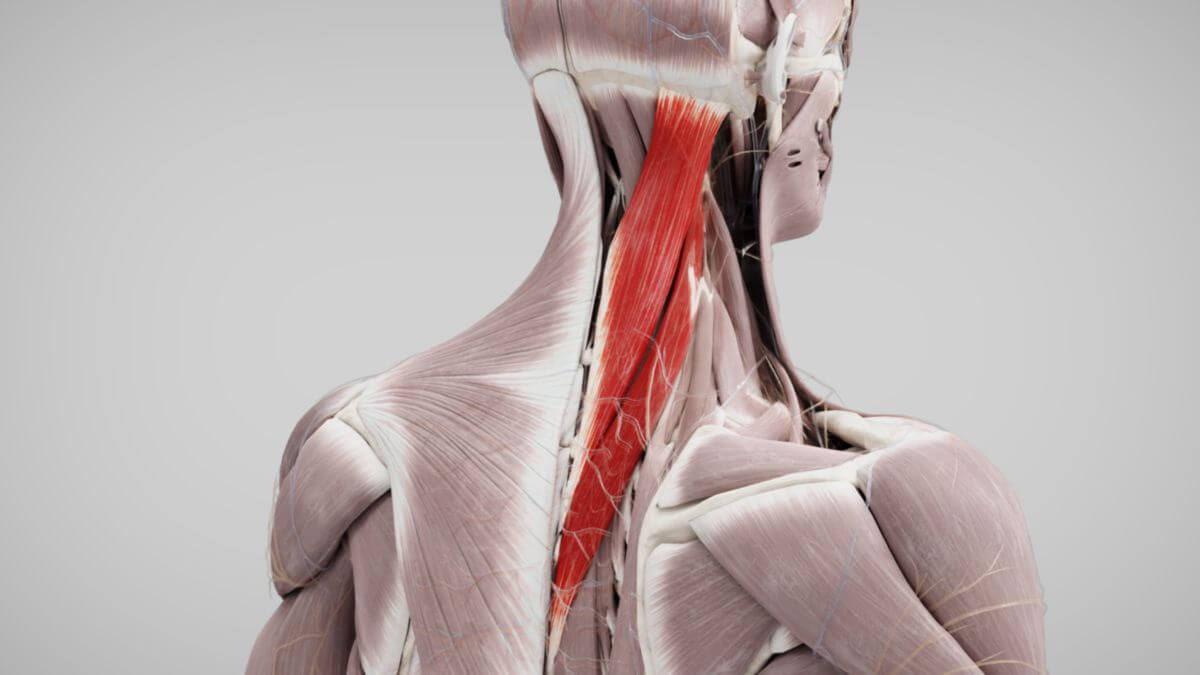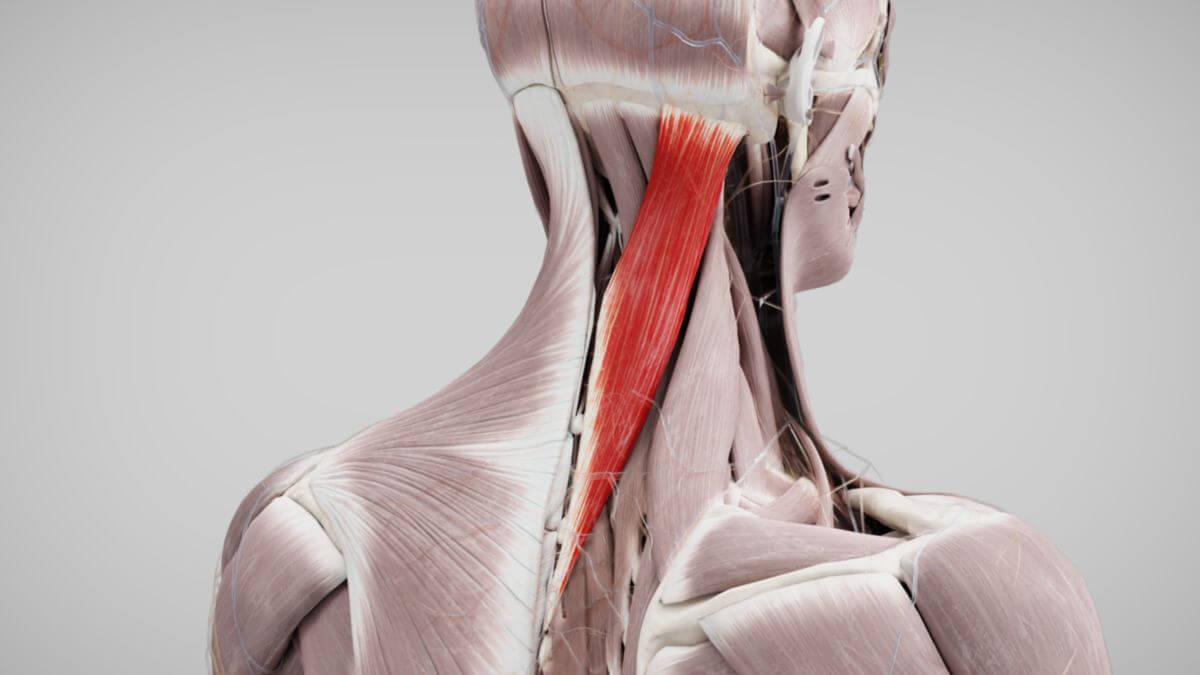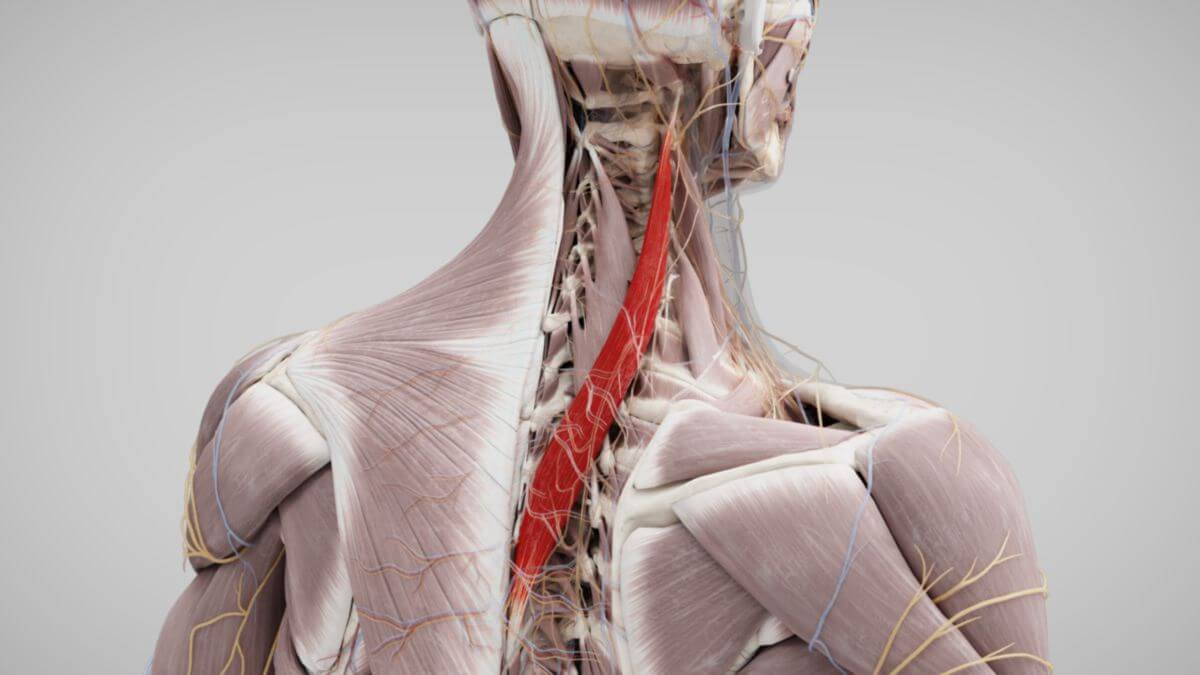Corpus: Splenius muscle
from ancient Greek: σπληνίον ("splenion") - compress, bandage
1. Definition
The splenius muscle is a skeletal muscle that belongs to the deep autochthonous back musculature, specifically forming part of the lateral tract of the erector spinae muscle.
2. Course
The splenius muscle generally runs from the spinous processes to the transverse processes. It is divided into two regions based on its location:
- Splenius capitis muscle
- Splenius cervicis muscle
2.1. Splenius capitis muscle
The splenius capitis muscle, located near the head, originates from the spinous processes of the 3rd to 7th cervical vertebrae (C3-C7) and the 1st to 3rd thoracic vertebrae (T1-T3), as well as from the ligamentum nuchae. It attaches to the mastoid process of the temporal bone and the lateral parts of the superior nuchal line of the occipital bone.
2.2. Splenius cervicis muscle
The splenius cervicis muscle originates from the spinous processes of the 3rd to 5th thoracic vertebrae (T3-T5), and according to some sources, also the 6th thoracic vertebra (T6). It attaches to the posterior tubercles of the transverse processes of the 1st to 3rd cervical vertebrae (C1-C3).
3. Innervation
The splenius muscle is innervated by the lateral branches of the posterior rami of the segmental spinal nerves, including the greater occipital nerve. The spinal nerves involved in its innervation typically range from C2 to T3, and some sources also include C1 to T6.
4. Vascular supply
The splenius muscle receives its blood supply from the muscular branches of the occipital artery.
5. Function
When the splenius muscle contracts unilaterally, it causes an ipsilateral lateral tilt (lateral flexion) and rotation of the head and cervical spine. When contracted bilaterally, it results in the reclination of the head and the extension (dorsiflexion) of the cervical spine.






